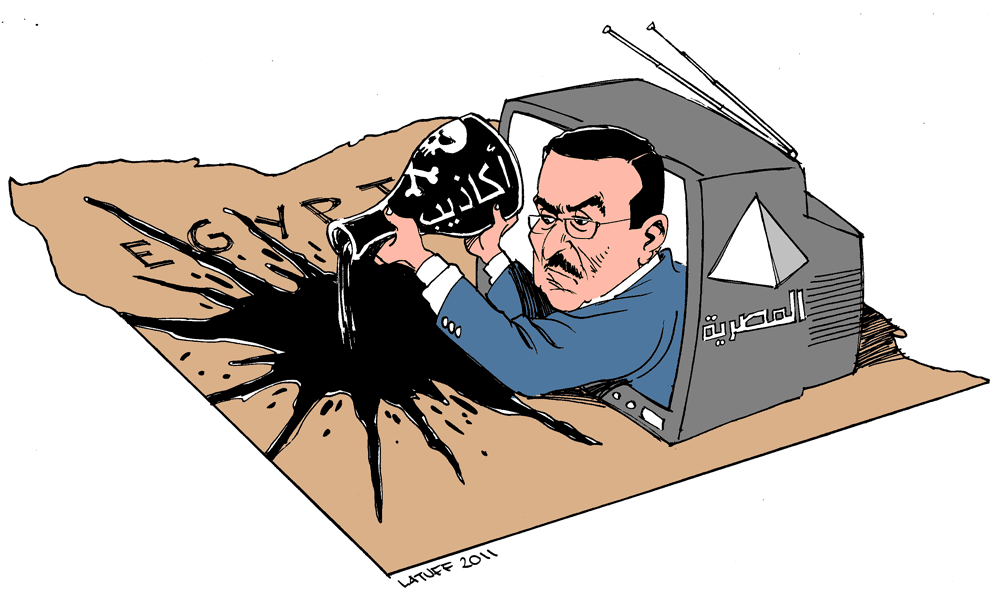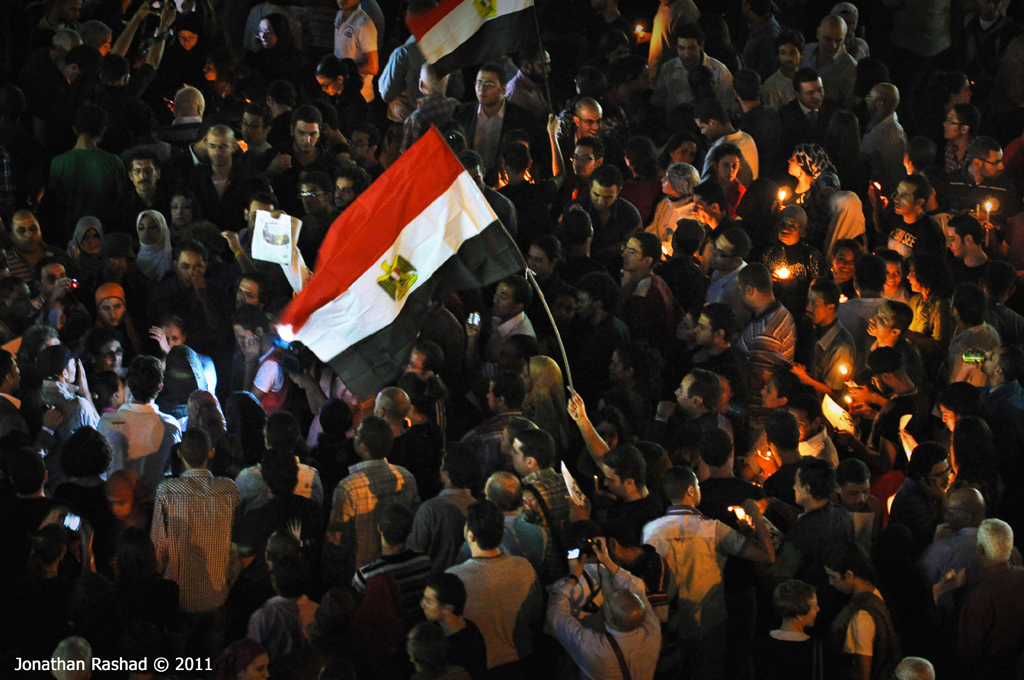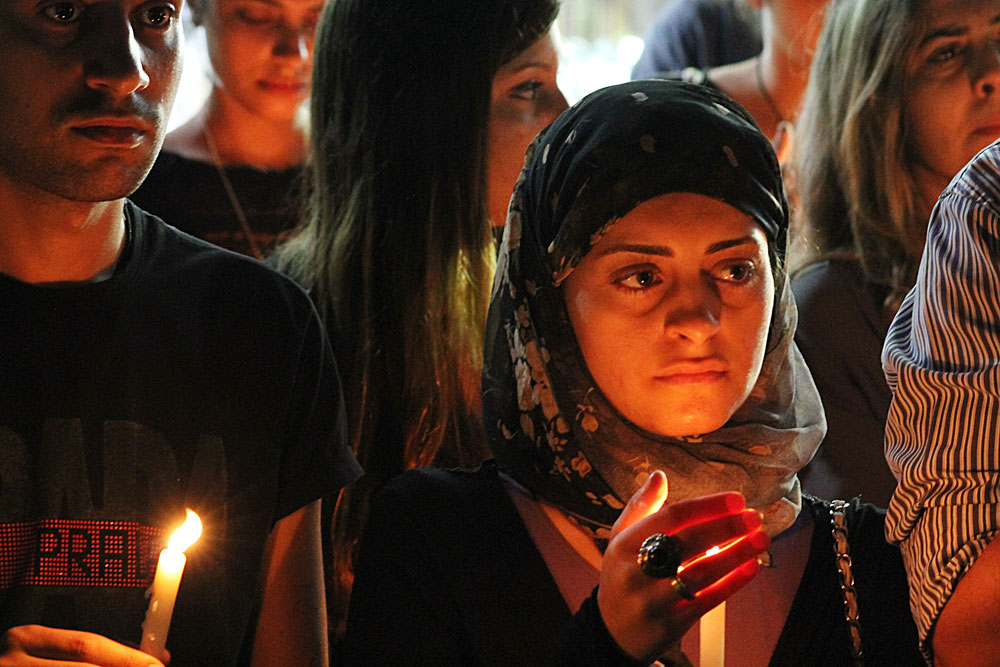Faced with ever increasing contradictions, the military rulers in Egypt have looked to cut across the recent wave of class struggle by attempting to divide the workers and youth along religious lines. This is the context in which the recent deaths of 24 Coptic Christian Egyptian protestors must be seen.
The latest events began after a brutal clampdown by the army of a Coptic protest in the Aswan province against the burning of a church. The protestors in Aswan were calling for the dismissal of the Governor of Aswan, who they claimed had done nothing to prevent the burning of Coptic churches, and who had in fact tried to blame the Copts themselves for building churches in the first place.
On Sunday 9th October, Coptic Christians in Cairo, who make up approximately 10% of Egypt’s 85 million population, marched from Shoubra, a predominantly Coptic suburb of Cairo, to Maspero, the location of the Egyptian state television, to protest against the state violence against the Copts in Aswan, and once again demanding the removal of the Aswan Governor. The demonstration began with around 200 Copts, but grew in size as it headed towards Maspero, with reports of over 1000 by the time it had reached the state television building. Importantly, numerous reports indicate that the protest was composed of both Copts and a large number of Muslims by the end of the march.
What ensued was the worst state brutality seen in Egypt since Mubarak let his marauding band of thugs and policemen loose upon the revolutionaries in Tahrir Square earlier this year. The army attacked the peaceful protest of Copts and Muslims with unbelievable ferocity. An eyewitness report on Al Masry Al Youm describes the army attacks:
“[The protest at Maspero] was immediately met with gunfire in the air. As protesters continued moving forwards, the gunfire continued.
“Suddenly, there was a great surge of people moving back, and something strange happened. Two armored personnel carriers (APCs) began driving at frightening speed through protesters, who threw themselves out of its path. A soldier on top of each vehicle manned a gun, and spun it wildly, apparently shooting at random although the screams made it difficult to discern exactly where the sound of gunfire was coming from.
“It was like some brutal perversion of the military show the armed forces put on for the 6th of October celebration three days before. The two vehicles zigzagged down the road outside Maspero underneath the 6th of October Bridge and then back in synchronicity, the rhythm for this particular parade provided by the ‘tac tac tac’ of never-ending gunfire, the music the screams of the protesters they drove directly at.
“And then it happened: an APC mounted the island in the middle of the road, like a maddened animal on a rampage. I saw a group of people disappear, sucked underneath it. It drove over them. I wasn’t able to see what happened to them because it then started coming in my direction.”
 Osama Heikal, minister of "information". Illustration: Latuff Videos also show the massacre of the protestors by the army in great detail, with army vehicles driving manically into the peaceful crowds and tear gas being fired from all sides. The latest figures indicate that at least 24 were killed and 329 injured – the most severe death toll since the January and February days of the revolution.
Osama Heikal, minister of "information". Illustration: Latuff Videos also show the massacre of the protestors by the army in great detail, with army vehicles driving manically into the peaceful crowds and tear gas being fired from all sides. The latest figures indicate that at least 24 were killed and 329 injured – the most severe death toll since the January and February days of the revolution.
The Egyptian state media have attempted to excuse this brutality as a defensive act against the “violent Coptic protestors”. As an article on Ahram Online reports:
“Egyptian state television not only failed to calm matters, but actually played a role in aggravating an already tense situation.
“In an unprecedented move, broadcasters on state television at one point called on the Egyptian public to head to Maspero en masse to defend Egyptian soldiers from what they described as ‘angry Christian protesters’.
“Indeed as the night unravelled, vigilante mobs attacked demonstrators fleeing police bullets and tear gas, using machettes, swords and cudgels.”
However, countless sources indicate that: a) the march was entirely peaceful before being attacked by the army; and b) the march was not merely a few angry Copts, but thousands of Copts and Muslims, who were protesting side-by-side against the illegitimate military regime, which they see as trying to steal the gains of the revolution from under their noses. As one eyewitness commented, “This is not religious strife, this is state sponsored terrorism towards the Copts.”
These attempts by the state to divide the Egyptian masses along religious lines and set Copts and Muslims against each other must be seen in the context of the recent waves of strike action and growing class struggles that have emerged over the past month in Egypt, which have exposed the military regime as being both deeply unpopular and extremely weak.
In addition, imperialist states elsewhere will try (and are trying) to use examples such as the Coptic protests to show how the Egyptian revolution will “inevitably” end in religious sectarianism and violence, similarly to how they use nationalism and religious differences between Arabs and Jews to divide Egyptian and Israel workers.
 Oct 13 vigil. Photo: Jonathan Rashad Such attempts to divide the Egyptian workers and youth along religious lines only serve to demonstrate how weak the military regime in Egypt really is. The burgeoning labour movement and intensification of the class struggle has scared the regime and has even caused splits at the top: the Egyptian deputy Prime Minister has resigned in protest over the state violence at Maspero on Sunday. Interestingly, the (now former) deputy PM, Hazem El-Beblawi, also cited the regime’s refusal to implement a public sector maximum wage and improve social insurance as a cause of his resignation.
Oct 13 vigil. Photo: Jonathan Rashad Such attempts to divide the Egyptian workers and youth along religious lines only serve to demonstrate how weak the military regime in Egypt really is. The burgeoning labour movement and intensification of the class struggle has scared the regime and has even caused splits at the top: the Egyptian deputy Prime Minister has resigned in protest over the state violence at Maspero on Sunday. Interestingly, the (now former) deputy PM, Hazem El-Beblawi, also cited the regime’s refusal to implement a public sector maximum wage and improve social insurance as a cause of his resignation.
The workers and youth of Egypt, however, know with clarity who their real enemy is, and are no longer willing to listen to any attempts to whip up Muslim-Christian conflict. The revolution that started at the beginning of this and which toppled Mubarak saw class unity expressed very clearly. This cut across all the attempts to divide the people along religious lines. But the present rulers – Mubaraks’ military men – are desperate to divert the masses away from class struggle and push them down the blind alley of sectarian conflict. The problem they are facing is that the consciousness of the workers and youth of Egypt has reached a level whereby they can easily see through the blatant manoeuvres of the military. As one protestor (speaking in this video) clearly puts it:
“We, the Muslims, are with the Christians... The military council is the second Mubarak. Understand you idiots [speaking to the state television]: the Egyptian people are 85 million people – don’t provoke them!”

